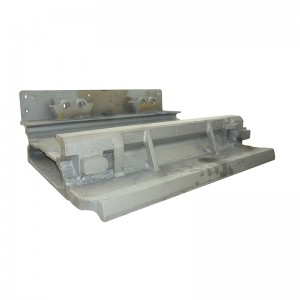- Afrikaans
- Albanian
- Amharic
- Arabic
- Armenian
- Azerbaijani
- Basque
- Belarusian
- Bengali
- Bosnian
- Bulgarian
- Catalan
- Cebuano
- China
- China (Taiwan)
- Corsican
- Croatian
- Czech
- Danish
- Dutch
- English
- Esperanto
- Estonian
- Finnish
- French
- Frisian
- Galician
- Georgian
- German
- Greek
- Gujarati
- Haitian Creole
- hausa
- hawaiian
- Hebrew
- Hindi
- Miao
- Hungarian
- Icelandic
- igbo
- Indonesian
- irish
- Italian
- Japanese
- Javanese
- Kannada
- kazakh
- Khmer
- Rwandese
- Korean
- Kurdish
- Kyrgyz
- Lao
- Latin
- Latvian
- Lithuanian
- Luxembourgish
- Macedonian
- Malgashi
- Malay
- Malayalam
- Maltese
- Maori
- Marathi
- Mongolian
- Myanmar
- Nepali
- Norwegian
- Norwegian
- Occitan
- Pashto
- Persian
- Polish
- Portuguese
- Punjabi
- Romanian
- Russian
- Samoan
- Scottish Gaelic
- Serbian
- Sesotho
- Shona
- Sindhi
- Sinhala
- Slovak
- Slovenian
- Somali
- Spanish
- Sundanese
- Swahili
- Swedish
- Tagalog
- Tajik
- Tamil
- Tatar
- Telugu
- Thai
- Turkish
- Turkmen
- Ukrainian
- Urdu
- Uighur
- Uzbek
- Vietnamese
- Welsh
- Bantu
- Yiddish
- Yoruba
- Zulu
Samh . 21, 2024 18:43 Back to list
metal sand casting
The Importance of Metal Sand Casting in Modern Manufacturing
Metal sand casting is a versatile and widely utilized process in the manufacturing industry that has proven its effectiveness through centuries of development. This method involves creating a mold from sand and pouring molten metal into that mold to produce various metal parts and components. Its significance cannot be underestimated, as it plays a critical role across a range of industries, from automotive to aerospace, and even in the manufacturing of intricate artistic designs.
One of the defining characteristics of metal sand casting is its flexibility in terms of the types of metals it can accommodate. Metals such as aluminum, brass, iron, and steel can all be cast using this method. This versatility allows manufacturers to select the most appropriate material for their specific applications, balancing factors such as cost, strength, corrosion resistance, and thermal properties. Consequently, metal sand casting can produce components that meet diverse requirements in both functionality and performance.
The process of metal sand casting begins with the creation of a mold. The mold is typically made from a mixture of sand, clay, and water that is compacted around a pattern of the desired object. This pattern is removed once the mold has hardened, leaving a cavity that reflects the shape of the intended component. The mold can be reused multiple times, making it a cost-effective solution for mass production. After preparing the mold, molten metal is poured into the cavity, filling it to capture the details of the design. Once cooled, the mold is broken apart to reveal the cast part, which often requires post-processing such as trimming, cleaning, and surface finishing.
metal sand casting

One of the key benefits of metal sand casting lies in its ability to produce complex shapes that would be difficult or impossible to achieve with other manufacturing techniques
. This attribute is particularly advantageous for industries that require bespoke components tailored to specific functional requirements. Moreover, the process allows for significant design flexibility, enabling engineers and designers to innovate without being constrained by manufacturing limitations.In addition to its design advantages, metal sand casting is also appreciated for its efficiency and cost-effectiveness. The materials used for molds are readily available and inexpensive, which reduces the overall production costs. Furthermore, the ability to create large and intricate castings in a single pour minimizes waste, aligning with modern manufacturing principles that seek to optimize resource utilization.
Despite its numerous advantages, metal sand casting does come with its challenges. For instance, achieving consistent dimensional accuracy can be difficult, and the process may produce defects such as porosity or shrinkage. To mitigate these issues, manufacturers often employ various techniques including using advanced simulation software to predict casting behavior, optimizing mold design, and implementing stringent quality control measures.
In conclusion, metal sand casting is an essential manufacturing process renowned for its flexibility, efficiency, and capability to produce complex shapes. Its wide range of applications across different industries highlights its enduring relevance in today’s manufacturing landscape. As technology continues to evolve, the methods and materials used in metal sand casting are likely to advance further, ensuring this age-old technique remains a cornerstone of modern manufacturing.
-
Custom Domestic Hot Water Heat Exchangers Efficient & Durable
NewsMay.24,2025
-
Cast Iron vs. Ductile Iron Differences, Uses & Benefits
NewsMay.24,2025
-
Top Gas Fired Boiler Supplier High-Efficiency Solutions & OEM Support
NewsMay.23,2025
-
Marine Gear Box Casting Solutions Durable & Custom OEM/ODM
NewsMay.23,2025
-
Custom Cast Iron Pipe Mold Bottom Ring Durable & ODM Solutions
NewsMay.22,2025
-
Precision nvestment Casting Services – Custom & ODM Solutions
NewsMay.22,2025


